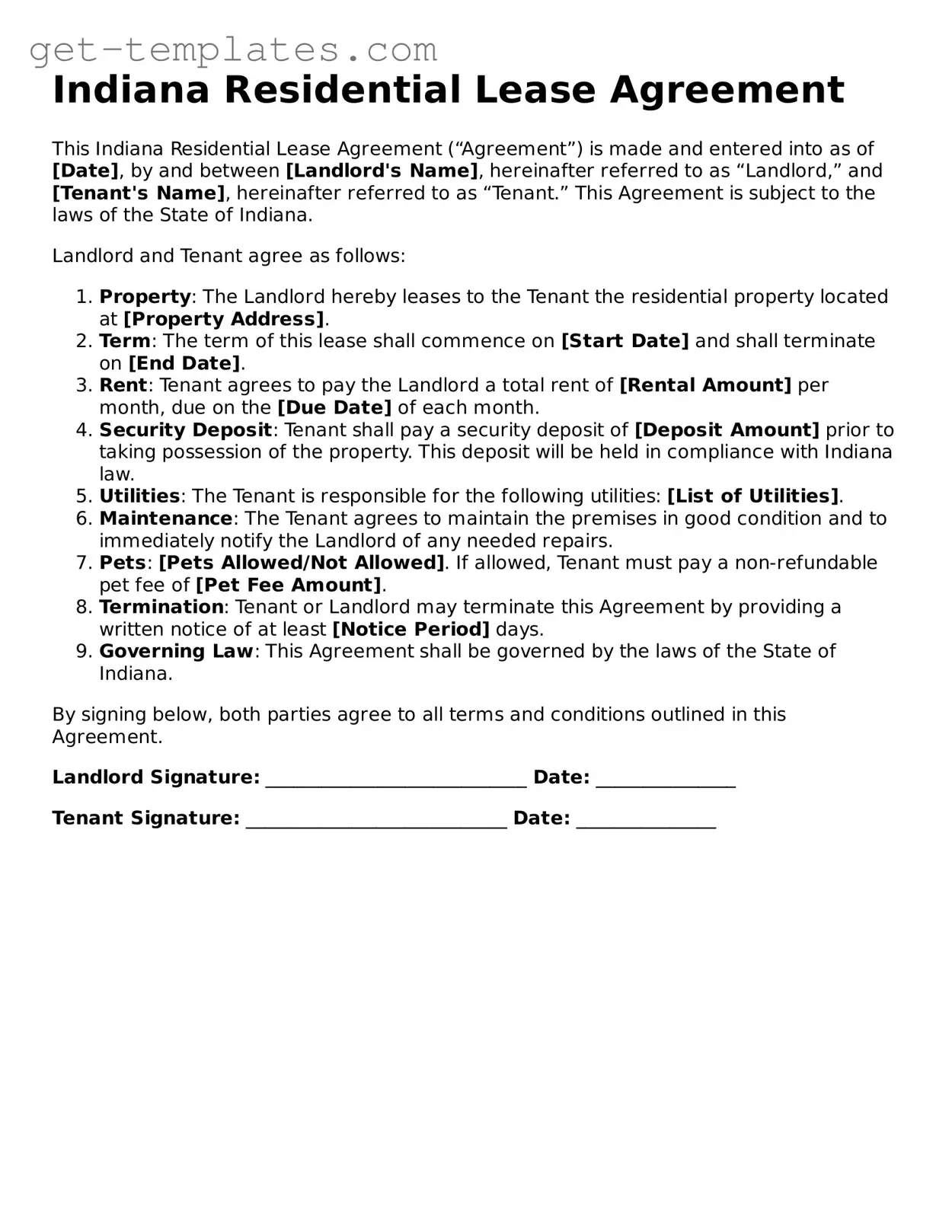What is an Indiana Residential Lease Agreement?
An Indiana Residential Lease Agreement is a legally binding contract between a landlord and a tenant. This document outlines the terms and conditions under which a tenant can occupy a rental property. It covers important aspects such as rent amount, lease duration, security deposits, and responsibilities of both parties.
What are the key components of the lease agreement?
Several essential elements should be included in an Indiana Residential Lease Agreement:
-
Parties Involved:
Names and contact information of both the landlord and tenant.
-
Property Description:
The address and details of the rental property.
-
Lease Term:
The duration of the lease, whether it's a fixed term or month-to-month.
-
Rent Details:
Amount of rent, due date, and accepted payment methods.
-
Security Deposit:
Amount required, conditions for its return, and any deductions.
-
Maintenance Responsibilities:
Duties of the landlord and tenant regarding property upkeep.
-
Termination Conditions:
How either party can terminate the lease and required notice periods.
How long is a typical lease term in Indiana?
In Indiana, lease terms can vary widely. Many residential leases are typically for one year. However, month-to-month leases are also common. It’s important for both parties to agree on the duration that suits their needs and to clearly specify this in the lease agreement.
What should I do if I want to terminate my lease early?
If you need to terminate your lease early, review the agreement first. Most leases include a termination clause that outlines the process. Generally, you must provide written notice to your landlord, usually 30 days in advance. Keep in mind that you may also be responsible for paying rent until a new tenant is found or until the lease term ends.
Are there any specific tenant rights in Indiana?
Yes, tenants in Indiana have several rights, including:
-
The right to a habitable living environment.
-
The right to privacy, meaning landlords must give notice before entering the rental property.
-
The right to receive a written receipt for any security deposit paid.
-
The right to fair treatment without discrimination.
What happens if a landlord fails to make necessary repairs?
If a landlord neglects necessary repairs, tenants have several options. First, they should notify the landlord in writing about the issue. If the landlord still does not address the problem, tenants can consider contacting local housing authorities or taking legal action. Indiana law allows tenants to withhold rent or make repairs themselves and deduct the cost from the rent under certain circumstances, but this should be approached cautiously and ideally with legal advice.
Can a landlord increase rent during a lease term?
Typically, a landlord cannot increase rent during a fixed-term lease unless the lease agreement includes a provision allowing for such increases. However, for month-to-month leases, landlords can raise the rent with proper notice, usually 30 days in advance. Always check the specific terms outlined in your lease.
What is the process for returning a security deposit?
In Indiana, landlords must return a tenant's security deposit within 45 days after the lease ends. If any deductions are made for damages or unpaid rent, the landlord must provide an itemized list of these deductions. It’s crucial for tenants to document the condition of the property upon moving out to ensure a fair return of their deposit.
Where can I find a template for the Indiana Residential Lease Agreement?
Templates for the Indiana Residential Lease Agreement can be found online through various legal websites, local real estate associations, or by consulting with a real estate attorney. It's important to ensure that any template used complies with Indiana state laws and is tailored to the specific rental situation.
